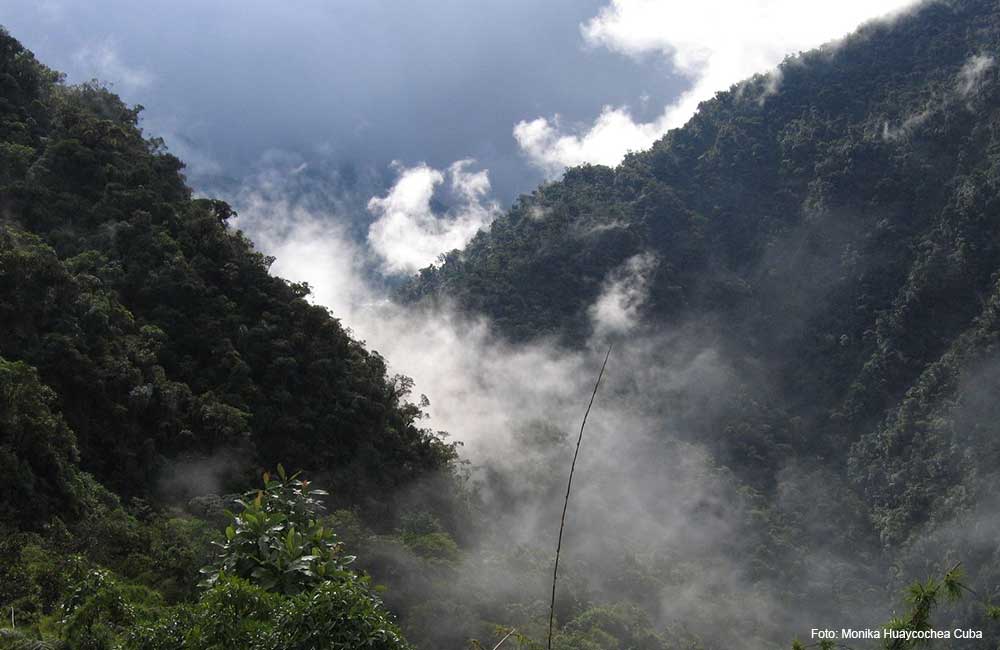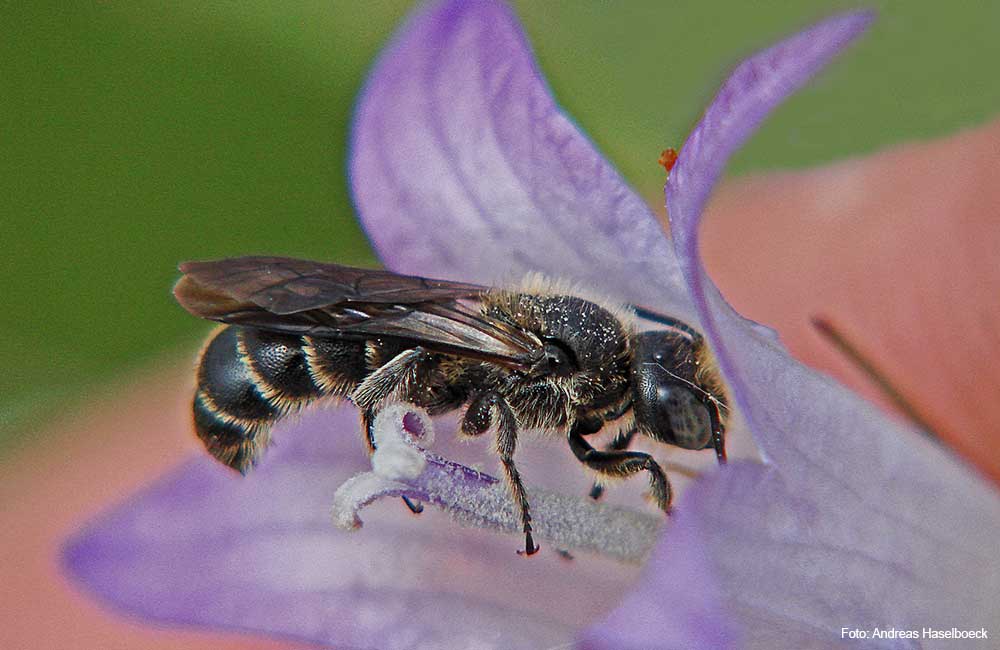The UN Biodiversity Conference starting today in Montreal is looking for ways to stop species extinction and is striving for a roadmap to protect the world’s ecosystems. This is because it is estimated that 150 species become extinct on Earth every day; the rate of extinction is ten to a hundred times higher due to human impact.
“As a result, we are all losing important ecosystem services that we need to survive,” says Matthias Schleuning, lecturer at Goethe University and head of the Functional Ecology and Global Change Group at Senckenberg Biodiversity and Climate Research Center.
In „Forschung Frankfurt“ (2.2020), he reported on his research on the interdependencies of plants and animals in complex ecosystems and on the winners and losers of radical habitat changes.
Adaptation or extinction: Species diversity in a warming world
Can mutually dependent plants and animals stay in sync?
Species loss is occurring ten to a hundred times faster today than it would in a world free from humanity’s enormous influence on the Earth system. The ecologist and biodiversity specialist Matthias Schleuning studies ways that plants and animals depend on each other. Understanding these interrelationships in complex ecosystems helps to clarify which species will be among the winners and losers of climate change and more intense land use by humans.
When Matthias Schleuning talks about his biodiversity research, he likes to take his listeners along with him on his travels and show them spectacular photographs of exotic animals and plants. The tropical Andes is a very special region for him and he has spent extended periods of time in the Manú National Park in Peru. Together with his listeners, Schleuning walks through the sparse and almost treeless landscape of his »Mountains of Diversity«, the high puna steppe some 4,000 metres above sea level. Then his journey takes him down the mountains, through mystical elfin forests with their mossy miniature trees and on through the misty mountain rainforest until he has descended some 3,000 metres and finally reaches the Amazon lowlands, where wide rivers measure out the rhythms of life. More than 1,000 species of birds are found here, four times more than in Germany, and almost ten times as many tree species can be found in a single hectare of forest.
Matthias Schleuning was already fascinated by biodiversity when he was a teenager. He was drawn to study biology and ecology and finally to conduct research in South America. Here in the tropical Andes, he seeks to understand how plants and animals live together and depend on each other: how a hermit hummingbird drinks nectar with its long, curved beak from Heliconia flowers that have just the same shape, and picks up pollen it carries to the next flower in the process. Or how the grey-breasted mountain toucan eats the fruits of Schefflera trees and then disperses their seeds with its droppings.

The Manú National Park in Peru covers areas with an elevational difference of over 3,000 metres and it is one of the most species-rich areas on Earth.

Animal-plant-relationships: The grey-breasted mountain toucan eats the fruits of a Schefflera plant and disperses its seeds (top).

Female harebell carpenter bees gather pollen from harebells and are important pollinators of these plants.
Changing ecosystems
Matthias Schleuning and his team have traced thousands of such mutually dependent relationships over the years and mapped species interaction networks in Andean forests where about 90 per cent of trees and shrubs depend on animals for pollination or seed dispersal. The elevational gradients of the Andean slopes are ideal for such research, since many highly diverse ecosystems are found here in close proximity. Alexander von Humboldt, who travelled through Ecuador in 1802, compared the habitats of a snow-capped Andean mountain to habitats stretching from the Arctic to the equator.
But Matthias Schleuning does not merely strive to describe the current status quo in these rich habitats. »We use our insights to make better predictions for the future, too«, he explains. The habitats he studies are changing. Forests are now being cleared for grazing, crops and settlements in many locations throughout the tropical Andes. Species of birds and plants are being driven into higher regions where the forest remains. Climate change is also driving flora and fauna to migrate towards higher ground in search of lower temperatures.
It can be discerned from the historical record that this trend is not new, but ongoing: Alexander von Humboldt sketched vegetation zones on the Andean mountain Chimborazo and entered the names of many plant species and vegetation types on this sketch. Scientists have compared the plants depicted on this historical sketch with the plants found on Chimborazo today and established that the different vegetation zones have moved upwards by at least 200 metres in the past 200 years, a finding that is consistent with the 1°C of atmospheric warming that has occurred since Humboldt’s time.
Species thrive at their climatic optimum
Matthias Schleuning: »Every species has its own dynamic geographical range. But there is currently an observable trend for species to move to where they can find their preferred climatic conditions. Land use by humans, mainly for agriculture, is currently still having a stronger impact on biodiversity than climate change, but their negative impacts will ultimately amplify each other.«
When temperatures start to increase faster as climate change accelerates, species will have to move faster, too, to stay within their optimal temperature range. Temperatures are currently rising at a rate of approximately 0.2°C per decade, twice the speed seen in the previous hundred years. Schleuning and his team are investigating the significance of this development for the interdependent relationships between fruit-eating birds and plants that depend on these interactions for seed dispersal. »Global observations show that species are currently moving about 10 metres upslope every decade. That is fast enough when environmental conditions do not change too quickly. The different climate zones on a mountain slope are not far apart, and that is favourable. But getting the timing right is still a major problem for these species«, Schleuning explains.
Seed dispersal by fruit eating birds is a complex and often protracted process. Most birds only disperse seeds over short distances. This leaves the important work of dispersing seeds over longer distances to a handful of bird species that are mostly quite large – to just the birds, in other words, that have already become rare in many regions, due to human impacts. This creates a substantial risk that not enough seeds will reach higher regions quickly enough for the plants to become established. Some plants species could be left behind and species from the tropical lowlands, especially, could go extinct in the medium term. »In simulation models for the Manú elevational gradient, we found that most plants would move too slowly in comparison with the speed at which temperatures on the mountain are rising«, Schleuning comments.
»Specialists« are severely threatened
Species belonging to the potential »losers« of climate change and now facing extinction are found all over the world and include species in Western and Central Europe. Schleuning and his colleagues have investigated interdependent relationships between more than 700 European species of plants and animals that assist with pollination and seed dispersal. One of the possible losers is the harebell carpenter bee, a wild bee species that collects pollen to feed its larvae exclusively from harebells. When harebells disappear, the harebell carpenter bee, as a specialist dependent on them, also disappears. The bee is doubly threatened by extinction because of its dependence on both harebells and specific climate conditions. In the other direction, harebells – like many kinds of plants – are less dependent on individual species of animals because they are visited and pollinated by a variety of insects.
Schleuning points out that climate change will see winners as well as losers. In Germany, for example, several bird species from around the Mediterranean will increasingly find conditions that suit them well. They include, for instance, the melodious warbler and the European bee-eater. Species that can move readily and are not highly specialised are generally better placed to cope with climate change than others.
Would it really be so bad if harebell carpenter bees were to disappear? »One species going extinct usually wouldn’t have much of an effect on the entire ecosystem«, Schleuning comments. »But if more and more species are lost, domino effects can trigger vast ramifications for ecosystems. Ecosystems are adaptable, but after major changes, the way back to an earlier system state can be completely cut off. That could mean that we could all lose important benefits provided by ecosystems that we need to thrive and survive.«

b: Species expand their geographical range upwards.
c: Species that already live at high levels die out because they cannot move further upwards.
d, f: Species shift their geographical range upwards.
e: Species adapt to changed climate conditions.
»What meaning should we attach to the disappearance of beauty?«
Animal pollinators, to give just one example of such benefits, play a major role in food production. The World Biodiversity Council (IPBES) estimates that 5–8 per cent of global crop production is directly attributable to animal pollination. On that basis, an annual market value amounting to 200–500 billion euros can be placed on this service. Practically all melon, cocoa and Kiwi flowers are pollinated by animals, for example, and about half of apple, pear and cherry production depends on animal pollination.
Schleuning remarks: »Species are going extinct at a rate that is at least ten times and possibly a hundred times faster than would be the case without human influence. This means that we are causing change to happen without being able to anticipate its consequences.« Such consequences could include tipping points prompting irreversible changes such as the collapse of pollination services in an ecosystem or the loss of a forest which is turned into a savannah. Our species-poor food crops could also be severely threatened by the emergence of new pests or diseases. Species extinction and biodiversity loss actually also increase the risk of pandemics.
In addition to economic perspectives on species extinction, there are also ethical aspects, says the researcher: »What does it mean for each of us individually when species are irrevocably lost? When beauty disappears?«
Schleuning pleads for the importance of diversity to be recognised: »The more diverse our ecosystems are, the more resilient they will be. Species-poor ecosystems are a gamble against the future. Making predictions about the future of our planet is difficult because of the many interdependent relationships between species and the feedback effects in the Earth system. Today, unfortunately, we are losing species so rapidly that predicting the consequences this will have for us humans is virtually impossible.«
Matthias Schleuning, born in 1978, studied biology at the University of Marburg and gained his doctorate there in 2008 with a thesis on the spatiotemporal dynamics of plant populations in Amazonian lowland forest in Peru. He subsequently conducted research at the universities of Mainz and Halle on African and Neotropical rainforests. He came to Frankfurt in 2010, initially as a research associate at the Senckenberg Biodiversity and Climate Research Centre (SBiK-F). He has headed a research group at the centre in »Functional Ecology and Global Change« as a senior scientist since 2015. In 2014, he gained his habilitation (venia legendi) at Goethe University with a thesis on plant-animal interaction networks. He teaches at the university as an adjunct professor. His research is mainly focused on mutualistic plant-animal networks and on modelling the consequences of global change for biodiversity.









